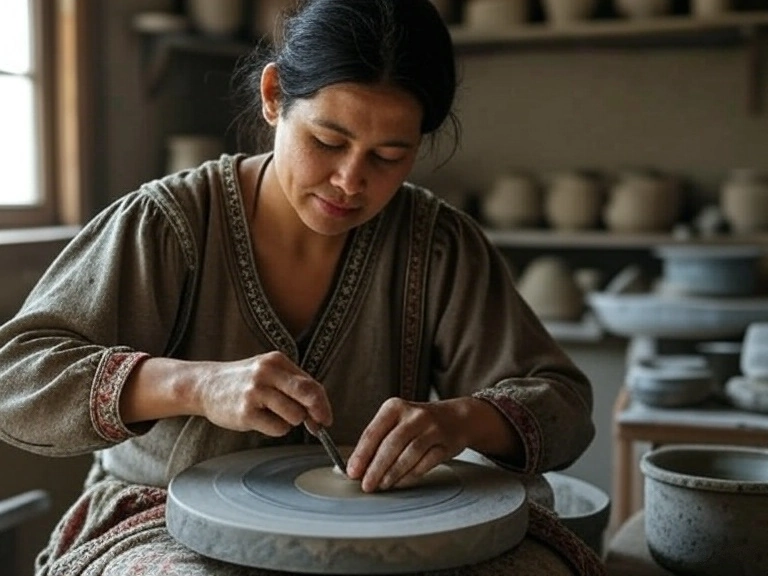Polygamy is a practice that has existed for thousands of years across various cultures and societies. It involves having more than one spouse at the same time, either through polygyny (a man with multiple wives) or polyandry (a woman with multiple husbands). While the idea of polygamy may seem unfamiliar to some, it is still widely practiced in certain parts of the world today, especially where cultural, religious, or economic factors support it.
In this article, we’ll explore 20 examples of polygamy, showing how it works in different cultures and how it has shaped families and communities. From ancient practices to modern-day customs, these examples offer a better understanding of the diverse ways polygamy is viewed and practiced. Whether driven by tradition, necessity, or belief systems, polygamy continues to be a complex and fascinating aspect of human relationships.
What Is Polygamy?
Polygamy is the practice of having more than one spouse at the same time. It can involve either a man having multiple wives (polygyny) or, less commonly, a woman having multiple husbands (polyandry). Polygamy is often influenced by cultural, religious, or social beliefs and is practiced in various parts of the world. While it is legal in some countries, it is banned or restricted in many others.
Polygamy has been practiced throughout history in many different cultures, often as a way to build larger family units or strengthen social and political ties. In some societies, it is seen as a sign of wealth and status, while in others, it may be a necessity for economic or social survival. Polygamy is most commonly found in regions of Africa, the Middle East, and parts of Asia, where it is often tied to religious or tribal customs.
Best Examples of Polygamy
Here are the top 20 examples of polygamy, explained clearly to help you understand how it works in different cultures and societies around the world.
1. Islamic Polygyny
In many Islamic countries, polygyny is allowed, where a man can have up to four wives, as long as he treats them all equally. This practice is based on interpretations of the Quran, which allows men to marry multiple women if they can treat them with fairness.
2. Mormon Fundamentalist Polygamy
In some fundamentalist groups of Mormonism, particularly in parts of the U.S. and Mexico, polygyny is practiced. In these communities, a man can have multiple wives as part of religious teachings, even though the mainstream Mormon Church (LDS) does not condone polygamy anymore.
3. Traditional African Polygyny
In many African cultures, particularly in countries like Nigeria, South Africa, and across West and East Africa, polygyny is a widespread and accepted practice. A man with several wives is often seen as a figure of wealth, power, and social influence. Polygyny is practiced for various reasons, including cultural traditions, economic benefits, and the desire to build large family networks. Each wife contributes to the household in unique ways, whether through childcare, farming, or managing other responsibilities.
4. Bedouin Polygamy
In some Bedouin tribes in the Middle East, polygyny is practiced. Bedouin men can have multiple wives, often for cultural and tribal reasons, and the size of the family can increase a man’s influence and power within the tribe.
5. Tibetan Polyandry
In parts of Tibet and Nepal, polyandry is practiced, where one woman has multiple husbands, often brothers. This is usually done to keep family land and property together, as splitting it between heirs would reduce its value.
6. Masai Polygyny
Among the Masai people of Kenya and Tanzania, polygyny is a common and culturally accepted practice. In this pastoral society, a man with multiple wives can raise more children, which not only strengthens the family unit but also ensures more hands to help with herding cattle and managing household tasks. Cattle are central to the Masai way of life, and larger families often lead to more wealth and social standing within the community. Each wife typically has her own responsibilities, and together, they contribute to the family’s success and survival in a lifestyle that depends heavily on cooperation and shared effort. This practice helps build a strong support system, benefiting the entire family structure.
7. Sororal Polygyny in Zambia
Sororal polygyny, where a man marries sisters, is practiced among some Zambian tribes. This is often seen as a way to strengthen family ties and keep wealth within the family.
8. Polygamy in Ancient Egypt
In ancient Egypt, polygamy, especially for pharaohs, was common. Pharaohs often had several wives and concubines to ensure they had multiple heirs, strengthening their royal lineage.
9. Ottoman Empire Harem
In the Ottoman Empire, sultans had harems, where they maintained multiple wives and concubines. This practice allowed the ruler to produce heirs and increase political alliances through marriages.
10. King Solomon’s Polygamy
In the Bible, King Solomon is said to have had 700 wives and 300 concubines, making him one of the most well-known examples of polygamy in history. His many marriages were often politically motivated, as they helped him forge strategic alliances with neighboring nations and strengthen his kingdom’s influence. These marriages were not just personal but served as important tools for diplomacy, allowing Solomon to maintain peace and expand his political reach.
11. Ashanti Polygamy
In the Ashanti culture of Ghana, polygamy is traditionally practiced. A man with many wives is often seen as successful, and his wives usually help in agricultural work, contributing to the household’s wealth.
12. Zulu Polygyny
In Zulu culture in South Africa, men traditionally practiced polygyny. Having multiple wives is seen as a sign of wealth and respect, with each wife contributing to the household and family’s success.
13. Kanuri Polygyny
The Kanuri people of Nigeria have a long tradition of polygyny. A man with several wives can have more children, which is often seen as a way to expand his family’s influence and work capacity.
14. Polygamy in Indonesia
In some rural parts of Indonesia, polygamy is still practiced, especially among religious or tribal leaders. Polygamy is allowed under certain circumstances in the Muslim-majority country.
15. Polygyny in the Fulani People
The Fulani, a nomadic ethnic group in West Africa, traditionally practice polygyny. Marrying more than one wife strengthens family ties and ensures enough labor for herding and farming, important activities in their livelihood.
16. Polygamy in Papua New Guinea
In Papua New Guinea, polygamy is practiced in various tribal groups. Chiefs and men of status often marry multiple women to demonstrate wealth and power. Wives work together to raise children and manage domestic tasks.
17. Polygyny in Saudi Arabia
Polygyny is legally practiced in Saudi Arabia, where a man can have up to four wives. However, strict rules are in place to ensure the man treats all wives equally, providing each with similar living conditions and care.
18. Polygamy in Laos
In rural areas of Laos, polygamy exists, particularly among the older generation. It is more common in minority ethnic groups, where having more than one wife can signify wealth and help with labor and household management.
19. Nigerian Polygamy
Polygamy is widely practiced in Nigeria, especially in Muslim-majority northern states. Both cultural and religious factors support the practice, and many men have more than one wife to help manage large households and farms.
20. Kipsigis Polygyny in Kenya
In the Kipsigis community of Kenya, polygyny is a traditional practice. A man’s wealth is often measured by the number of wives and children he has, and this large family network provides support for farming and social influence.
Benefits of Polygamy
Polygamy can offer several benefits, especially in cultures where it is widely practiced. One of the main advantages is the ability to create large family units. Having multiple spouses can lead to more children, which is often seen as a sign of wealth and success in many societies. These larger families can share the workload, making tasks like farming or running a household more manageable.
Another benefit is financial stability. In some cases, multiple spouses contribute to the household’s income, helping the family become more economically secure. Polygamy can also strengthen social and political ties, as marriages between families can create alliances and foster cooperation between different groups.
Lastly, polygamy can provide emotional and social support within the family. With more people in the household, there’s often a stronger sense of community and shared responsibilities. This helps in raising children and caring for each other in times of need creating a strong family bond.
Disadvantages of Polygamy
While polygamy may have some benefits, it also comes with its share of disadvantages. One of the biggest challenges is the potential for jealousy and conflict between spouses. Managing relationships with multiple partners can be difficult, and it may lead to feelings of unfairness or neglect within the family.
Financial strain is another common issue. Supporting multiple spouses and a large number of children can put a significant burden on a household’s resources, especially in communities where economic opportunities are limited. This can make it hard to provide for everyone equally.
In some cases, polygamy can also limit personal freedom, as individuals may feel societal or cultural pressure to enter into such arrangements. Additionally, children from polygamous families may face challenges, such as competing for attention and resources among many siblings, which can impact their upbringing.
Read also: 30 Best Moral Dilemma Examples
Polygyny vs. Polyandry
Polygyny and polyandry are two different types of polygamy. Polygyny is when a man has multiple wives, and it’s the more common form of polygamy found in many cultures. In societies where polygyny is practiced, it’s often seen as a way for a man to increase his status and wealth by building a large family. Each wife may have specific roles within the household, contributing to tasks like childcare, cooking, or farming.
On the other hand, polyandry is when a woman has multiple husbands. This is much rarer and is mostly found in some isolated regions, such as parts of Tibet and Nepal. Polyandry often happens in areas where resources are scarce, as it helps keep family land from being divided among heirs. By sharing one wife, brothers or close family members can ensure their property stays intact.
Although both practices involve multiple spouses, they have very different social and economic purposes
Read more
10 Famous Examples of Polygamists
Discover 10 famous polygamists from history and modern times, exploring their lives, cultural impact, and reasons for polygamy.
In this This Morning video, Adam Lyons, Brooke Shedd, and Jane Shalakhova share how they’ve made their polygamous relationship work since 2014. Watch to see a modern example of polygamy and how they balance their unique family dynamic.
The Most Popular on BitGlint

Top 100 Personal Items List
Everyone uses personal items in their daily lives, often without even thinking about them. From the moment you wake up...

30 Defiance Examples & Meaning
Defiance is something most people experience at some point in life. You feel it when you say no to something that...

Top 30 Desire Examples & Definition
Desire is a powerful force that drives much of human behavior, shaping our goals, dreams, and everyday decisions. It's...

100 Non-Digital Things List
In everyday life, there are still hundreds of objects, tools, and materials that exist completely outside the digital...

30 Examples of Attention & Definition
Have you ever noticed how a catchy tune can grab your attention, even when you're busy doing something else? It's...

60 Cultural Traditions Examples & Definition
Cultural traditions are part of daily life - whether people realize it or not. They shape what we eat, how we...

Top 30 Intimacy Examples & Meaning
Intimacy goes beyond physical touch or romantic moments. It’s about closeness, trust, and connection. In everyday...
Get Inspired with BitGlint
The Latest
40 Emotional Value Examples & Meaning
Why do some messages stick — while others are forgotten? Why do people choose one brand over another, even when the product is the same? The answer often comes down to emotional value. Emotional value is what makes a message feel human. It’s the emotional connection...

30 Teasing Examples & Definition
Teasing is a common part of human interaction. People tease in different ways, for different reasons. Sometimes it is friendly. Sometimes it can hurt feelings. Understanding what teasing means and seeing clear examples helps everyone handle these moments better....
40 Thought Experiments for Curious Minds
Some questions can’t be answered with a simple yes or no. Some problems don’t have a clear solution. That’s where thought experiments come in. They aren’t just old ideas from philosophy books. Thought experiments are tools we still use to think through problems, test...
100+ Things That Are Cold
Cold is something most people understand the moment they feel it. You step outside on a freezing morning. You grab a drink straight from the fridge. You touch a metal pole in the middle of winter. That sharp, biting sensation? That’s cold. This article brings together...


